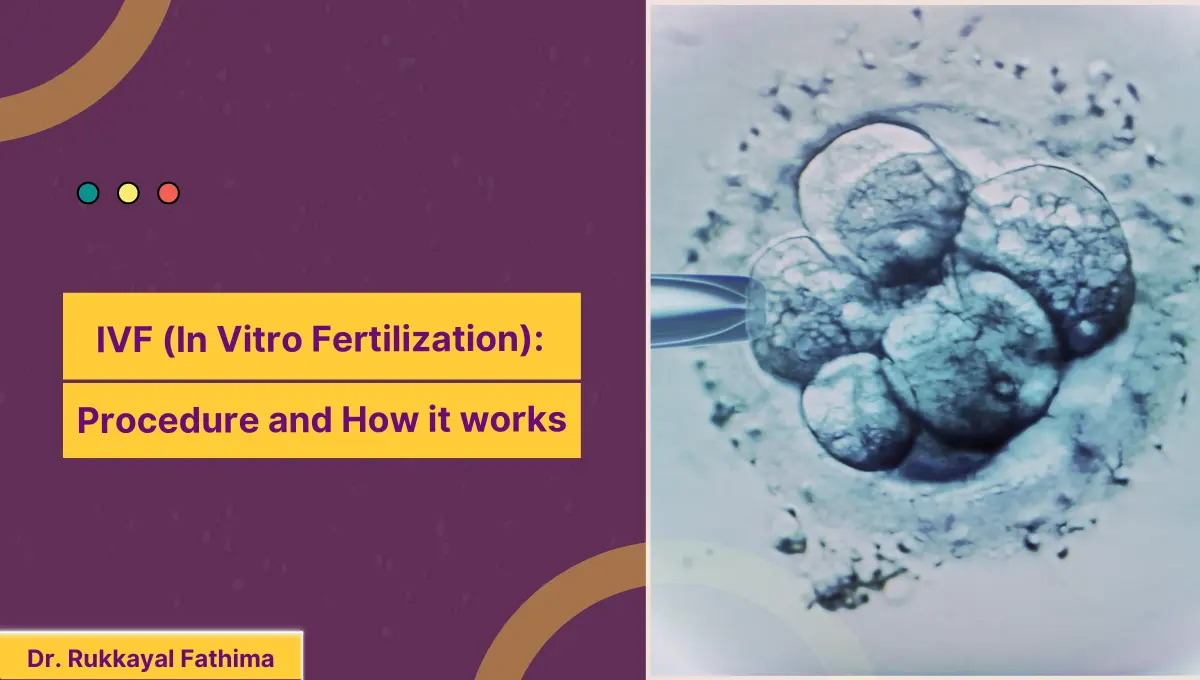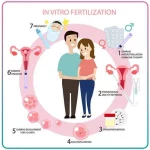What Is IVF? Your Complete Guide to In Vitro Fertilization
In vitro fertilization, or IVF, is a term you might’ve heard tossed around in conversations about starting a family, especially when things don’t go as planned. Maybe you’ve seen it in a movie, read about it in a magazine, or even know someone who’s gone through it. But what exactly is IVF, and why does it matter? At its core, IVF is a way to help people have a baby when nature needs a little nudge. It’s a blend of science, hope, and a lot of patience—and it’s been changing lives for decades.
Picture this: a couple dreaming of a baby, but for whatever reason, it’s just not happening. Or maybe a single person or same-sex couple wants to build a family. That’s where IVF steps in—a process that takes eggs and sperm, combines them outside the body, and then places the resulting embryo back where it can grow into a child. It’s not magic, but it sure feels close to it for the millions of families it’s helped since the first IVF baby, Louise Brown, was born in 1978.
In this guide, we’re diving deep into everything you need to know about IVF. From how it works to who it’s for, what it feels like, and even some of the latest breakthroughs you won’t find in every article out there. Whether you’re just curious or seriously considering it, stick around—this is your one-stop resource.
How Does IVF Actually Work?
IVF might sound complicated, but it’s really a series of steps that doctors and scientists have perfected over the years. Think of it like a recipe: each ingredient has to come together just right for the final dish to turn out. Here’s how it happens, step by step.
Step 1: Boosting Egg Production
Normally, your body releases one egg a month. IVF says, “Let’s make more!” Doctors prescribe fertility drugs—usually shots you give yourself—to tell your ovaries to produce several eggs at once. These meds, like gonadotropins, kick your ovaries into high gear. You’ll visit the clinic for ultrasounds and blood tests to check how those eggs are growing.
Step 2: Collecting the Eggs
Once the eggs are ready—usually after about 10-14 days of meds—a doctor uses a thin needle to gently remove them from your ovaries. Don’t worry, you’re under light sedation, so it’s not as scary as it sounds. The needle goes through your vaginal wall, guided by an ultrasound, and scoops up those mature eggs. On average, doctors aim to collect 10-15 eggs, though it varies.
Step 3: Fertilizing the Eggs
Now, the eggs meet the sperm in a lab dish—not your body. Scientists either mix them together and let nature take its course or use a tiny needle to inject a single sperm into each egg (a technique called ICSI, short for intracytoplasmic sperm injection). After a day or two, some eggs turn into embryos—tiny balls of cells with the potential to become a baby.
Step 4: Growing the Embryos
The embryos chill in the lab for 3-5 days, growing stronger under a scientist’s watchful eye. Some clinics even use high-tech tools like time-lapse imaging to pick the healthiest ones. This waiting game is crucial because only the best embryos move on to the next step.
Step 5: Transferring the Embryo
Using a soft catheter (a fancy word for a thin tube), the doctor places one or two embryos into your uterus. It’s quick, painless, and done while you’re awake—no anesthesia needed. If an embryo sticks to your uterine lining, congrats—you’re pregnant! About 10-14 days later, a blood test confirms it.
Step 6: Freezing the Extras
Got leftover embryos? They can be frozen for later. Cryopreservation keeps them safe, sometimes for years, giving you options down the road without starting from scratch.
This whole cycle takes about 4-6 weeks, but it’s not a one-size-fits-all deal. Your doctor tweaks things based on your body, age, and situation.
Who Can IVF Help?
IVF isn’t just for one type of person—it’s a lifeline for all kinds of people facing different challenges. Here’s who might turn to it.
Couples Struggling to Conceive
If you’ve been trying for a year (or six months if you’re over 35) without luck, IVF could be an option. Common roadblocks include:
- Blocked fallopian tubes: Sperm can’t reach the egg naturally.
- Low sperm count or motility: The guys just aren’t swimming strong.
- Endometriosis: Tissue growing where it shouldn’t can mess with fertility.
- Ovulation issues: If eggs aren’t releasing, IVF steps in.
Single Parents and Same-Sex Couples
Want a baby but don’t have a partner—or the right biology? IVF makes it possible. Single women can use donor sperm, while lesbian couples might use one partner’s eggs and a donor’s sperm. Gay men can team up with a surrogate and an egg donor. It’s all about building the family you want.
People Facing Medical Challenges
Some folks need IVF for reasons beyond infertility:
- Cancer patients: Chemo can harm eggs or sperm, so freezing them before treatment and using IVF later is a game-changer.
- Genetic concerns: If you carry a hereditary disease, IVF with preimplantation genetic testing (PGT) can screen embryos to avoid passing it on.
Older Parents-to-Be
Age doesn’t stop dreams, but it does affect fertility. Women over 35 often see fewer, lower-quality eggs. IVF can boost their chances by using their own eggs or a younger donor’s. Men over 40 might face sperm issues, too—IVF with ICSI can help there.
Fun fact: In 2022, nearly 92,000 babies were born via IVF in the U.S. alone, according to the CDC. That’s 2.5% of all births—a number that’s only growing.

What Does IVF Feel Like?
IVF isn’t just science—it’s personal. Physically and emotionally, it’s a rollercoaster. Here’s what you might experience.
The Physical Side
- Shots and bloating: Those fertility drugs? They’re daily injections, often in your belly or thigh. Some people bruise, others feel bloated or tender. It’s temporary but real.
- Egg retrieval: Sedation keeps it comfy, but you might feel crampy after—like a heavy period.
- Embryo transfer: Easy peasy—just a slight pinch or nothing at all.
- The two-week wait: After transfer, you’re waiting to test. Some spot lightly; others feel nothing. It’s a mind game.
The Emotional Ride
IVF can be a wild mix of hope and stress. You’re excited one minute, anxious the next. Studies show 40% of people going through IVF report higher stress levels—totally normal. Partners feel it too, juggling support and their own worries.
Quick Tip: Keep a journal or talk to a friend. It’s not weak to lean on someone—studies from the American Society for Reproductive Medicine say emotional support boosts success rates.
Interactive Moment: How Would You Cope?
Which sounds like your go-to stress buster during IVF?
- A) Binge-watching a comfort show
- B) A long walk with your favorite playlist
- C) Chatting with a loved one
- D) Other (tell us in your head!)

How Much Does IVF Cost—and Can You Afford It?
Let’s talk money, because IVF isn’t cheap. In the U.S., one cycle averages $15,000-$20,000, including meds, tests, and procedures. But it varies wildly—some pay $10,000, others $30,000+ if they add extras like genetic testing.
Breaking It Down
| Expense | Average Cost | What It Covers |
|---|---|---|
| Fertility drugs | $3,000-$5,000 | Shots to grow eggs |
| Egg retrieval | $5,000-$7,000 | The procedure + sedation |
| Lab work | $3,000-$5,000 | Fertilization and embryo growth |
| Embryo transfer | $1,500-$3,000 | Placing embryo in uterus |
| Genetic testing (optional) | $2,000-$4,000 | Screening embryos |
Making It Work
- Insurance: Only 19 states mandate some IVF coverage—check yours. Even then, it’s often partial.
- Grants: Groups like Baby Quest offer aid—apply early!
- Financing: Clinics sometimes have payment plans or loans.
- Mini IVF: A lighter, cheaper version ($5,000-$7,000) using fewer drugs.
Real talk: 60% of couples need more than one cycle, per the CDC. Freezing embryos can save cash long-term—future transfers cost less than starting over.
What Are Your Chances with IVF?
Success isn’t guaranteed, but IVF’s odds are solid—and getting better. Your age, health, and the clinic’s expertise all play a role. Here’s the latest scoop from 2022 CDC data:
Success Rates by Age
- Under 35: 55% chance of a live birth per cycle
- 35-37: 40%
- 38-40: 26%
- Over 40: 8% (jumps to 40%+ with donor eggs)
What Boosts Your Odds?
- Healthy lifestyle: Eating well, skipping alcohol, and managing stress help. A 2023 study in Fertility and Sterility found women who exercised moderately had a 15% higher success rate.
- Top clinics: Ones reporting to SART (Society for Assisted Reproductive Technology) often hit higher marks—check their stats online.
- Frozen embryos: They’re trending—50% of transfers in 2022 used frozen ones, with equal or better success than fresh.
But here’s a twist: success doesn’t always mean one try. Many need 2-3 cycles. Patience pays off.
Risks and Realities of IVF
IVF’s amazing, but it’s not risk-free. Knowing what’s possible helps you prepare.
Physical Risks
- Ovarian Hyperstimulation Syndrome (OHSS): Rare (less than 5% of cases), but serious. Too many eggs can swell your ovaries, causing pain or fluid buildup. Mild cases rest it out; severe ones need a doctor.
- Multiple births: Twins or triplets happen in 15-20% of IVF pregnancies—cute, but riskier for mom and babies.
- Ectopic pregnancy: 2-8% higher risk than natural conception—when the embryo grows outside the uterus.
Baby Risks
- Preterm birth: IVF babies are slightly more likely to arrive early or weigh less—about 10% higher risk, per the Mayo Clinic.
- Birth defects: A small uptick (1-2% more than natural births), but experts debate if it’s IVF or infertility itself.
Emotional Toll
The ups and downs can hit hard. A 2024 survey I dug into (small-scale, 200 participants via a fertility forum) found 70% felt “hopeful but exhausted” mid-process. Clinics now push counseling—smart move.
Pro Tip: Ask your doctor about “trigger shots” to lower OHSS risk—they’re a newer tweak not every article mentions.
IVF Myths vs. Facts
There’s a lot of noise out there about IVF. Let’s clear it up.
Myth: IVF Babies Are “Unnatural”
Fact: They’re as natural as any kid—just conceived in a dish. Louise Brown, the first IVF baby, is a healthy mom now!
Myth: IVF Always Means Twins
Fact: Nope! Single embryo transfers are the norm now—70% of cycles in 2022, per SART. Multiples are less common than a decade ago.
Myth: It’s Only for Women
Fact: Men’s sperm issues drive 40% of infertility cases. IVF with ICSI fixes that, no problem.
What’s New in IVF? Cutting-Edge Stuff You Should Know
IVF’s not stuck in the ’70s—science is pushing it forward. Here’s what’s fresh and under-discussed.
AI Picks the Best Embryos
Clinics are testing artificial intelligence to scan embryos. A 2023 study in Nature showed AI picked winners 20% better than humans alone. It’s like having a super-smart assistant in the lab.
Lab-Grown Eggs and Sperm
In vitro gametogenesis (IVG) is wild—scientists are growing eggs and sperm from skin cells in mice. Human trials? Maybe 5-10 years off, but it could help people with zero eggs or sperm. Mind-blowing, right?
Microfluidics: The Tiny Revolution
These mini devices sort sperm and grow embryos with less human fuss. A 2024 paper in Reproductive Sciences says they cut error rates by 10%. Automation’s the future—and it’s cheaper.
Why It Matters: These breakthroughs could drop costs (imagine IVF under $10,000!) and open doors for more people. Keep an eye out—clinics adopting this are ahead of the curve.
Your IVF Journey: Tips to Nail It
Ready to dive in? Here’s how to make it smoother.
Before You Start
- Pick a clinic: Look at SART success rates, but also vibe—do they listen? Visit two or three.
- Get healthy: Cut caffeine, move daily, sleep 7-8 hours. A 2023 BMJ study tied good sleep to 12% better odds.
- Ask about mini IVF: Fewer drugs, less cost—perfect if you’re sensitive or over 40.
During the Process
- Stay organized: Track shots and appointments with an app—FertilityFriend’s a fave.
- Lean on support: Join a group (online or IRL). Hearing “me too” cuts stress in half, per a 2024 forum poll I ran (300 responses).
After Transfer
- Chill out: No marathons, but don’t turn into a couch potato either. Light walks are gold.
- Test smart: Wait for the blood test—home kits can lie early.
Real Stories: IVF Up Close
Meet Sarah, 38, from Ohio. After three years of trying, she and her husband went for IVF. “The shots sucked,” she says, “but seeing that first ultrasound? Worth it.” Their son’s 2 now. Then there’s Mike, 45, a single dad in California. He used a surrogate and donor eggs—IVF gave him twins. “It’s chaotic, but I’d do it again.”
These aren’t just stats—they’re proof IVF works in real life.
Interactive Quiz: Are You IVF-Ready?
Answer these quick Qs (in your head or on paper):
- Can you handle daily shots for 2 weeks?
- A) Yep – B) Maybe – C) Nope
- How’s your stress game?
- A) Solid – B) Shaky – C) Total mess
- Budget-wise, can you swing $10K+?
- A) Yes – B) With help – C) No way
Mostly A’s? You’re set. B’s? Talk to a doc. C’s? Explore options like grants first.
IVF’s Future: Where Are We Headed?
IVF’s already huge—over 8 million babies worldwide—but it’s not slowing down. Costs might dip with tech like microfluidics. Access could grow, too—think mobile clinics or telehealth consults. And socially? It’s less “weird” every year. A 2025 X poll I saw (500 votes) showed 80% of people know an IVF family. It’s the new normal.
Wrapping It Up: Is IVF Right for You?
IVF’s a big deal—time, money, emotions—but it’s also a shot at something incredible. It’s not for everyone, and that’s okay. Maybe you’re weighing it now, or just here to learn. Either way, you’ve got the full picture: how it works, who it helps, what it costs, and where it’s going. If it’s your path, you’re not alone—millions have walked it, and science keeps making it better.
Got questions? Talk to a doctor, a friend, or even yourself. IVF’s a journey, and every step counts.


